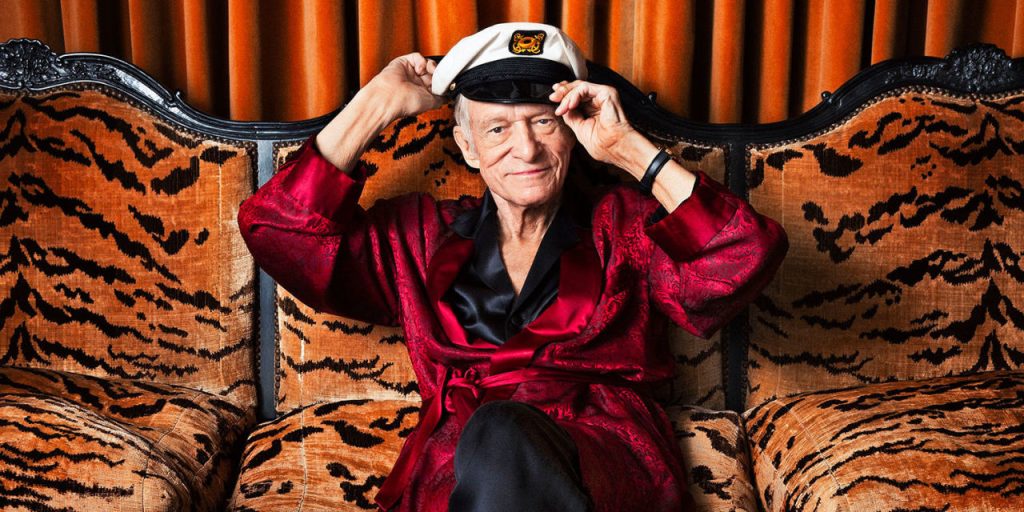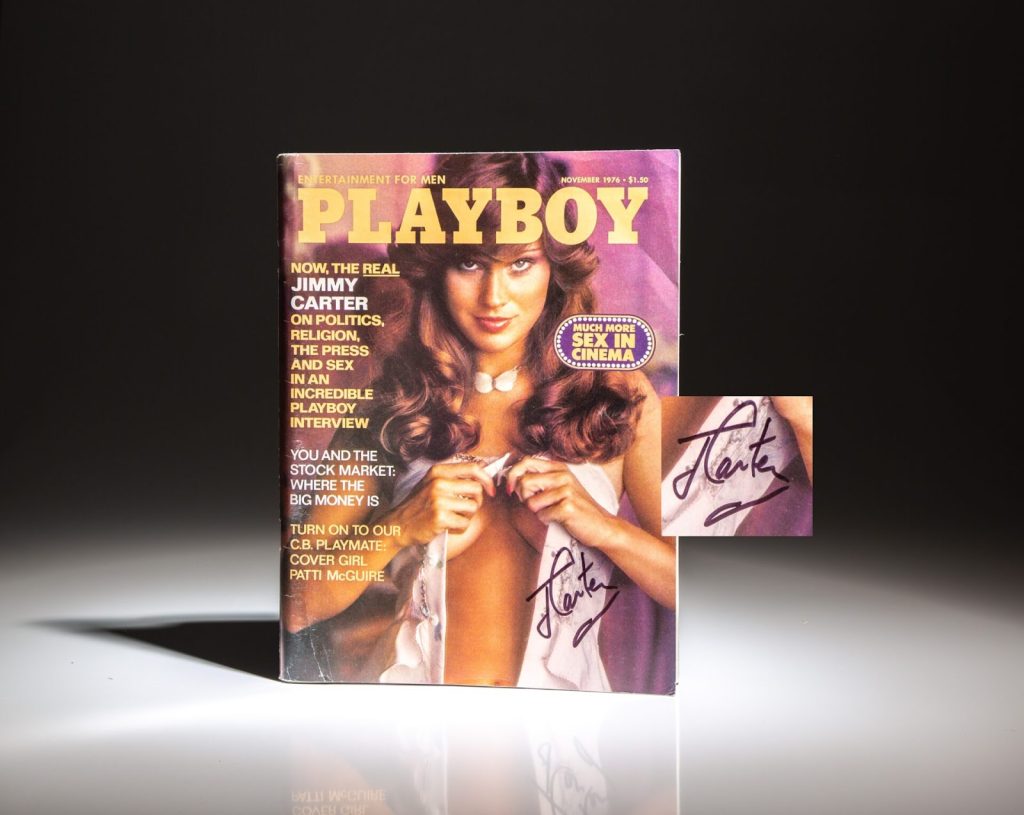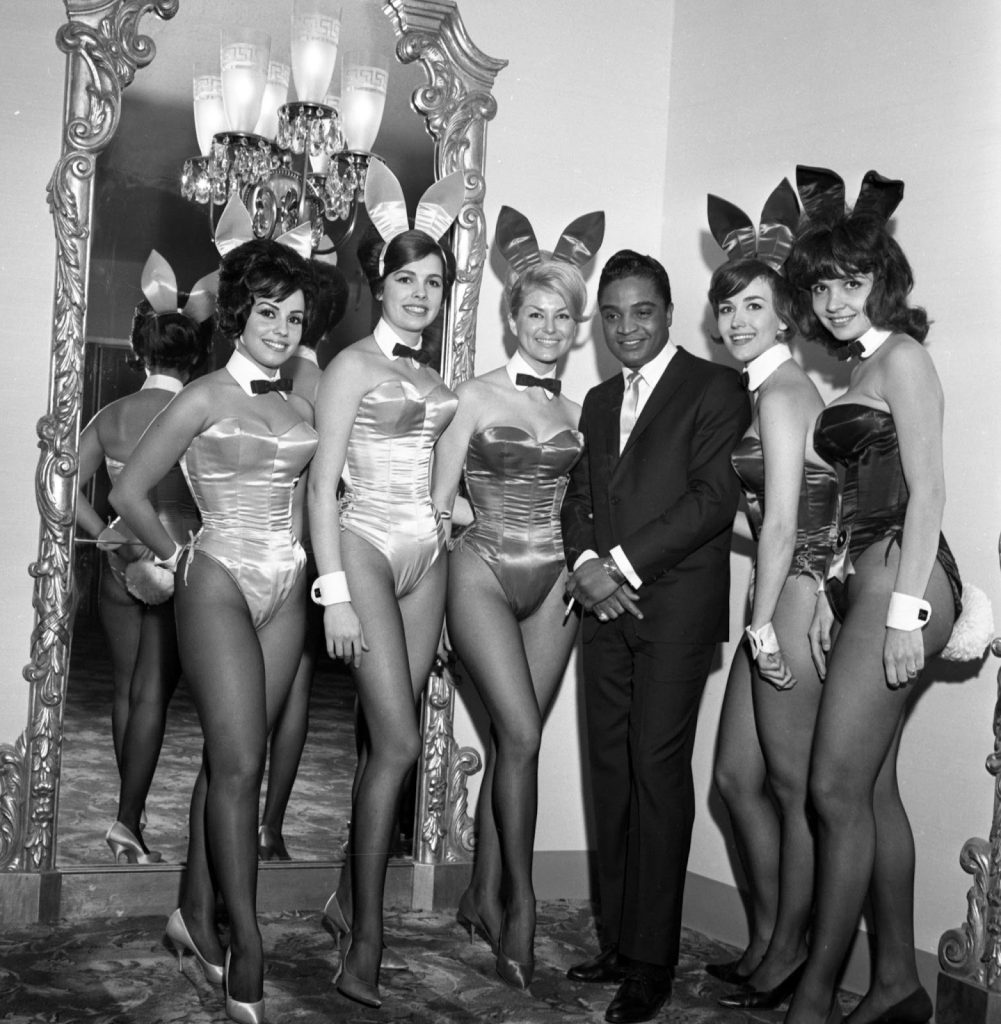The renowned Playboy Bunny logo is an unmistakable attention-grabber, impossible to miss or forget once you’ve seen it. After all, it is iconic. Its mysterious appearance, with the rabbit facing toward the left and the significant spelling out of the company name, is enough to have anyone fascinated.
It perfectly embodies everything necessary to represent a brand that is entirely about sex. This symbol easily tells people the brand’s identity, excelling in its ability to convey the essence of the brand, effectively communicating its renowned status and all that it represents. It stands as one of the most straightforward yet widely recognized logos, known and appreciated by millions worldwide for its prestige and captivating appeal.
It’s unique and different from the logos displayed on magazine covers and has become legendary worldwide. However, this leads to the question of how the world’s legendary adult magazine chose a bunny to represent their company.
Even more than that, there’s the question of how the premier adult magazine came into existence. As it is, there’s a fascinating story behind the iconic logo associated with this logo and the company itself. Let’s look at the Playboy logo’s history, the company’s history, and some interesting facts.
The History of the Playboy Logo
The original logo was created when the company was created in 1953. The symbol hasn’t been touched since it was first created, being so iconic that it hasn’t needed any redesign or drastic changes. The Playboy logo is distinct; it features an image of a bunny’s profile, with a strong and sharp look sketched out.
The bunny has a personality, with a sophisticated bow tie around its neck. The original draft of the logo didn’t look like the one we see today and would end up representing the brand for years. The initial concept for the logo was markedly distinct from its current form. It featured a rabbit adorned in a tuxedo jacket, holding a glass, and casually smoking a cigarette.
It was crowded, with the rabbit standing in a modern location and surrounded by wood pipes, nude statues, and trophies. This is more the representation of a Playboy company, don’t you think?
However, the brand decided that the logo was too crowded, and designer Art Paul was responsible for simplifying the logo. Paul took only roughly thirty minutes to simplify the sketch. The one thing that stood out and was kept was the bunny. It was decided that the bunny was the one aspect that accurately represented the company, although in a cluttered setting.
However, he simplified the bunny by only showing a close-up of the profile and putting it with the company name. Paul had decided on a combined logo, including a wordmark and an icon. Little did Paul know when he was creating this logo and simplifying it from the original version that it would become such a legendary and iconic part of their brand.
Now, it’s hard to find someone who doesn’t instantly associate the iconic black rabbit, wearing his classy bow tie, with the brand.
The Font
While the bunny symbol is iconic and easily recognizable, the wordmark is equally essential in defining the logo’s overall identity and impact. The wordmark features a bold serif typeface in all uppercase letters.
The wordmark itself isn’t anything unique, simply using a common font without any features that stand out.
However, it has become a recognizable part of the logo, a crucial component that makes it what it is.
Why Choose The Rabbit
Why choose a rabbit to start with for an adult magazine brand? Hugh Hefner, the creator and chief editor of Playboy Magazine, addressed this query: “The rabbit, the bunny, in America has a sexual meaning, and I chose it because it’s a fresh animal, shy, vivacious, jumping – sexy. First, it smells you, then it escapes, then it comes back, and you want to caress it, to play with it. A girl resembles a bunny, joyful, joking.”
According to Hefner, the rabbit was chosen for its diverse meaning, with the ability of one animal to have many meanings. While it can symbolize sexiness and mischievousness, it can also symbolize comfort and vulnerability.
Although the color choice of black for the bunny and the addition of the bow tie add a level of sophistication and success to the logo, it is still up to each individual’s interpretation of what the rabbit means to the company.
Hugh Hefner

We couldn’t discuss Playboy without properly recognizing the founder of the adult magazine company. Hugh Hefner had a career as a copywriter in 1951 but resigned after being denied a salary increase. Although, at the time, this may have been a difficult decision, little did he know that soon after, he would become the founder of a magazine that would make him wealthy.
Hefner founded Playboy magazine only two years after quitting his job as a copywriter, in 1953, when he was only 27 years old. At the time, Hefner was far from wealthy and borrowed $1,000 from his mother to start the company. This started the entertainment industry being changed forever by one man with the Playboy publication. Hefner changed history by being the first person to create an American magazine that presented female sexually oriented material and nudity in a sophisticated manner.
The first Playboy issue came out in December 1953 and featured a nude image of Marilyn Monroe.
This first issue was a success immediately, and in just a few weeks, the first edition sold almost 54,000 copies. This was just the beginning of the fame that this magazine would reach, and Monroe’s image was only the start of the many famous faces that would appear in the magazine. Shortly after, more issues were released with Fahrenheit 451 serialized in them.
This became Playboy’s signature, releasing issues with popular and famous pieces and features such as Marilyn Monroe. Celebrity women would continue to pose for the magazine, increasing the magazine’s popularity and reaching new audiences with every issue.
Margot Kidder, Debbie Gibson, and Amanda Beard were just a few famous names featured in the issues over the years. Hugh Hefner passed away at age 91 on September 27th, 2017, in the Playboy Mansion from sepsis brought on by an infection.
Although he’s gone, his legacy continues with Playboy magazine, which has now sold over 4.5 million copies worldwide. You can’t hear the iconic name of Hugh Hefner without thinking about the famous Playboy magazine.
The Playboy Mansion
The Playboy Mansion, also referred to as the Playboy Mansion West, was Hugh Hefner’s home. He lived there from 1974 to when he passed away in 2017.
The Playboy Mansion, situated in the affluent Holmby Hills neighborhood of Los Angeles, California, near Beverly Hills, was purchased by Hefner for $1.1 million. In 2016, he sold the property to his neighbor, Daren Metropoulos, who is known for his roles in Pabst Brewing Company and Hostess Brands. As part of the sale agreement, Hefner retained the right to reside in the mansion for the rest of his life.
Metropoulos allowed Hefner to stay in the home until his death in 2017. From the time Hefner bought it, his mansion wasn’t merely home to Hefner but also home to the many lavish parties he hosted. The parties were known for being attended by celebrities and socialites.
These extravagant gatherings were truly remarkable, with one of the most notable being Hefner’s annual Midsummer Night’s Dream party, held from August 2013 to 2015. These lavish events were aimed at maintaining Playboy’s brand presence and relevance in the minds of consumers. The parties would gather extraordinary publicity between the extreme events and the celebrities that attended.
Hefner crafted guests’ time at the mansion into an adult Disneyland. Every adult there would receive any pleasure they could imagine. Hefner himself had his choice of numerous Playboy bunnies, and he could be seen with them whenever guests attended parties.
The mansion had a staff of roughly 70 people, which included the zookeepers, butlers, chefs, maintenance, security, and groundkeepers. Every Sunday, Hefner hosted movie nights where Playmates and special guests would be invited to watch movies from his exceptional 4,000 movie collection.
If you were curious why these celebrities and socialites were interested in the mansion, you should see it. If you were to pull into the mansion’s driveway during its prime, you would see a stunning sight that would surely blow you away. When you take in the mansion from the outside, you’ll see it hosts 22,000 square feet of perfection.
However, the amazement lies in the pools and grouts on the property. An expansive jacuzzi was an integral part of the mansion, and during the parties, Hefner had dancers and a Ferris wheel, and “Entourage” even used the mansion as a filming location. The mansion is truly an entertainer’s home, with luxury real estate boasting pool fountains and stunning patios.
Conclusion
Overall, the Playboy logo is iconic. The bunny logo is known for its level of sophistication and excellent representation of the brand.
The company itself is famous and known well for the many famous features in their magazine issues. Hugh Hefner is widely recognized as the visionary behind the Playboy brand.
His home, the Playboy Mansion, is a legendary real estate property known for the lavish parties Hefner hosted there.
However, it’s clear that the brand wouldn’t be as famous as we see it today without the signature logo that’s made such a significant impact.

















